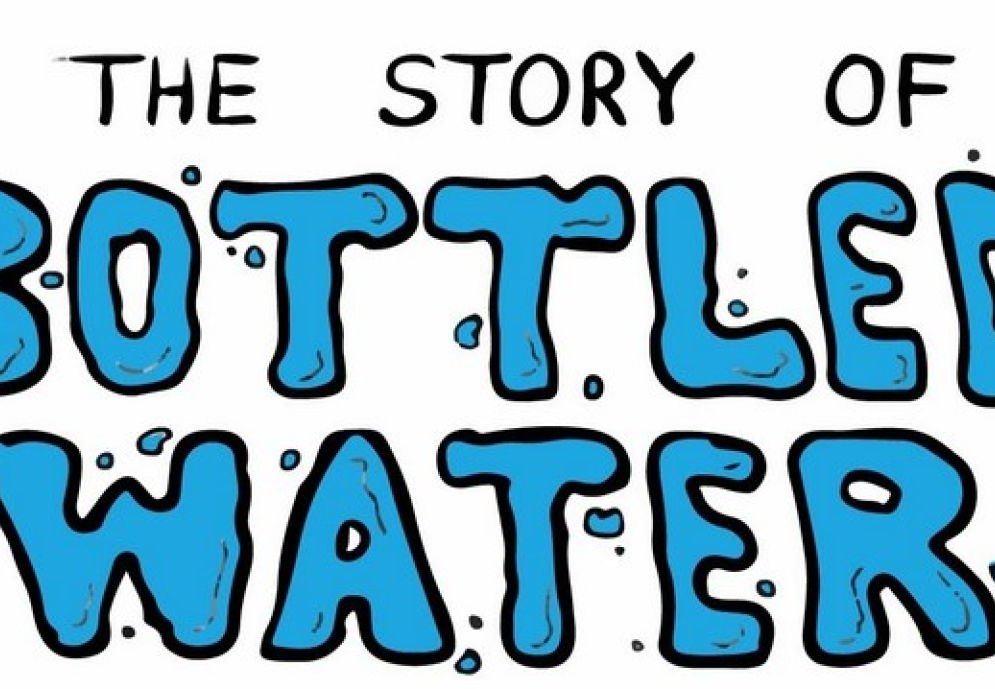

Story of bottled water
Projektzusammenfassung
Was unterscheidet Wasser in Plastikflaschen von Leitungswasser? Erforschung der Marketing-Tricks die Flaschenwasserlobby anhand einer Videoanalyse.
Lernergebnis
Schüler/innen
- reflektieren ihren Konsum von Wasser aus der Flasche.
- erwerben grundlegende Kenntnisse über den Energie- und Ressourcenverbrauch von Flaschenwasser - im Vergleich zu Leitungswasser
- machen sich mit den Mechanismen der Werbung für abgefülltes Wasser vertraut.
- verstehen, dass Wasser ein Allgemeingut ist und das Recht auf Wasser zu den wichtigsten Menschenrechten gehört.
- kennen Argumente für und gegen den Konsum von abgefülltem Wasser.
- entwickeln und verteidigen einen eigenen Standpunkt zu diesem Thema.
Erforderliche Zeit
2 Unterrichtseinheiten
Material
- Computer, Laptop, Tablet oder Handy
- Youtube-Video "The story of bottled water" (Dauer: 08:04) Director: Louis Fox, Written by: Annie Leonard, Jonah Sachs, Louis FoxProduction: The Story of Stuff Project & Free Range Studios, USA 2010
Beschreibung der Aktivität
In Flaschen abgefülltes Quell- und Mineralwasser ist sehr beliebt, wobei der Marktanteil und der Pro-Kopf-Verbrauch steigen. In Werbe- und Imagekampagnen wird abgefülltes Wasser als qualitativ hochwertiger als Leitungswasser dargestellt. Die wichtigsten globalen Akteure auf dem Markt für abgefülltes Wasser sind Nestlé, Danone, Coca Cola und Pepsi. In dem englischsprachigen Film „The Story of Bottled Water“ erläutert Annie Leonard die mit dieser Entwicklung verbundenen Probleme.
1. Video ansehen und Diskussion (30 Minuten)
Die Schülerinnen und Schüler sehen sich das Video „The Story of Bottled Water“ an und diskutieren anschließend die darin enthaltenen Aussagen.
Impulsfragen für die Diskussion:
- Was war neu für dich?
- Was hast du bereits gewusst?
- Was war besonders interessant für dich?
- Was hat dich besonders berührt?
2. Imagekampagne für Wasser - Gruppenarbeit (50 Minuten)
Die Schüler werden in Gruppen aufgeteilt. Jede Gruppe entscheidet, ob sie eine Imagekampagne für Leitungswasser oder für Wasser in Flaschen planen möchte.
Aufgabenstellung: „Sie arbeiten in einem Kreativbüro. Ihr Büro hat den Auftrag erhalten, eine Imagekampagne für Leitungswasser oder Flaschenwasser zu entwerfen. Das Konzept soll vor einer Jury (Klasse) präsentiert werden.“
Startet mit der Sammlung der Vor- und Nachteile von Leitungswasser und Flaschenwasser. Die wichtigsten Argumente aufschreiben.
- Was sind die wichtigsten Botschaften, die in der Kampagne vermittelt werden sollen?
- Wie sollen sie vermittelt werden?
- Welche Maßnahmen soll die Kampagne beinhalten?
- Präsentiert euer Konzept vor der Jury (Klasse).
Tipp: Die Berliner Organisation a:tip tap hat 2024 eine Werbekampagne für Leitungswasser gemacht und diese ähnlich wie für Flaschenwasser gestaltet. Hier der link zur Kampagne zur Inspiration.
3. Schlussfolgerung und Konsolidierung des Gelernten. (20 Minuten)
Diskussion, wie die Schülerinnen und Schüler persönlich und die Schule als Ganzes den Flaschenmüll reduzieren können. Sammlung der Ideen.
Ideenpool:
- In der Schule/im Unterricht nur Leitungswasser trinken.
- Jeder Schüler/jede Schülerin und die Lehrkräfte haben eine nachfüllbare Wasserflasche.
- Mehrwegflaschen anstelle von Einwegflaschen in Verkaufsautomaten/am Buffet verwenden.
- Einführung eines Pfandsystems für Plastikflaschen/Getränkedosen am Buffet.
- Separate Sammelsysteme für Plastikflaschen einrichten.
- Förderung des Upcyclings.
Weiterführende Aktivitäten:
- Durchführung einer Imagekampagne für Leitungswasser in der Schule (unter Verwendung der von den Schülergruppen entwickelten Konzepte)
- Internetrecherche - Wer sind die wichtigsten Akteure auf dem europäischen Markt für abgefülltes Wasser?
- Videoproduktion - Produzieren wir unser eigenes „Story of a Plastic Bottle“-Video.
- Einen Aktionsplan zur Verringerung des Flaschenmülls in der Schule erstellen.
- Das Leitungswasser aufpeppen (mit Kräutern, Früchten, CO2, etc.)
Weiterführende Materialien/Links:
- UN report zu Bottled water
- Break free from Plastic
- Baobab – Begleitmaterialien zum Film "The story of bottled water"
- Plastikatlas 2019
Tipps, wie das Thema in den Lehrplan integriert werden kann
Naturwissenschaft: Sammeln von Informationen über die ernährungsphysiologischen Vorteile des Trinkens von Leitungswasser
Kunst: Planung und Durchführung einer Imagekampagne bzw. eines Video-Projekts
Geschichte, Sozialwissenschaften, Wirtschaft, Sprachen, Medien: Überlegungen zu Marketingstrategien und -kampagnen
